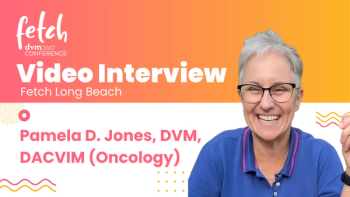
The "One Health" Framework Can Be Used to Identify Zoonotic Endoparasites
Researchers conducted a systematic review of studies that used the ‘One Health’ framework to identify zoonotic endoparasites in a community-based setting.
Researchers conducted a
The One Health concept has become increasingly important, particularly because of the increased global public health concern regarding zoonotic
Continued high rates of
Authors searched publication databases (PubMed, Embase, Google Scholar, Chinese National Knowledge Infrastructure) for relevant, peer-reviewed literature. In addition, they searched GreyLit.org and websites of One Health-focused organizations (One Health Commission, One Health Platform) for grey literature, or unpublished, non-commercial research. Primary peer-reviewed literature needed to meet certain inclusion criteria: simultaneous collection of biological specimens from all three One Health domains (animal, human, environment), use of laboratory methods for parasite detection in all domains, and a research focus on zoonotic endoparasites. Secondary peer-reviewed literature included only reviews.
Data collection was most extensive for studies involving specimen collection from all three domains. Studies meeting all inclusion criteria were analyzed for bias and quality assessment. Due to the fact that quality assessment criteria have not yet been established for One Health studies, authors developed a quality assessment tool by modifying previously published
Thirty two studies (30 peer-reviewed literature studies, 2 grey literature studies) spanning 23 countries met all inclusion criteria; one hundred and sixty two studies spanning 54 countries reported sampling from two One Health domains.
Seventeen of the 30 peer-reviewed literature studies meeting all inclusion criteria focused on either blood-borne (Leishmania spp.,Toxoplasma gondii) or gastrointestinal (Cryptosporidium spp., Giardia spp.) protozoan parasites. Six studies each focused on nematodes (Toxocara canis, Dirofilaria immitis), trematodes (Schistocoma spp.), and one focused on cestodes (Taenia saginata). Even though 16 studies used PCR for parasite species identification in at least one One Health domain, only six used this technique for all three domains. Regarding specimen collection, the most frequently collected environmental specimen was arthropods. Although dogs were the most frequently sampled animal, about half of the studies collected samples from multiple animal species (livestock, wildlife, fish).
Of the 162 studies sampling from two domains, the most common sample pairing was animal-human (102/162 studies); the least common sample pairing was human-environment (16/102 studies). Cryptosporidium/Giardia spp., Leishmania spp., Taenia spp., and Echinococcus spp. were evaluated most frequently in these studies. Several parasites, including Leishmania spp., were investigated using all three sample pairings (animal-human, animal-environment, human-environment).
The two grey literature studies meeting all inclusion criteria involved investigation of Trypanosoma cruzi, which causes Chagas disease. In one
Financial challenges, along with other potential barriers (language, data sharing, communication between disciplines), may have contributed to the low number of studies identified as simultaneously addressing all three One Health domains. Authors believed the infrequent use of PCR to identify parasitic species in all three domains highlighted an important gap in One Health parasitology research.
The high frequency of human-animal collaborations in this review is likely not surprising, given the tendency for the veterinary community to establish research collaborations with the human health community. However, this observation could reinforce the common perception that the veterinary community plays the predominant role in One Health research.
Authors suggested several ideas for continued One Health research:
- Involve relevant stakeholders, such as community members, advocacy groups, and policy makers
- Incorporate input from social scientists and economists to develop feasible disease prevention plans
- Use molecular analysis techniques to identify and potentially prevent frequent modes of disease transmission
Dr. JoAnna Pendergrass received her doctorate in veterinary medicine from the Virginia-Maryland College of Veterinary Medicine. Following veterinary school, she completed a postdoctoral fellowship at Emory University’s Yerkes National Primate Research Center. Dr. Pendergrass is the founder and owner of JPen Communications, LLC.
Newsletter
From exam room tips to practice management insights, get trusted veterinary news delivered straight to your inbox—subscribe to dvm360.






